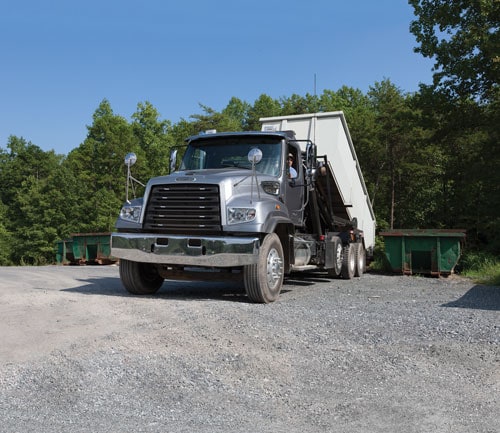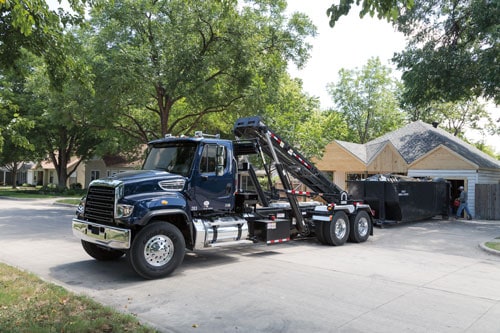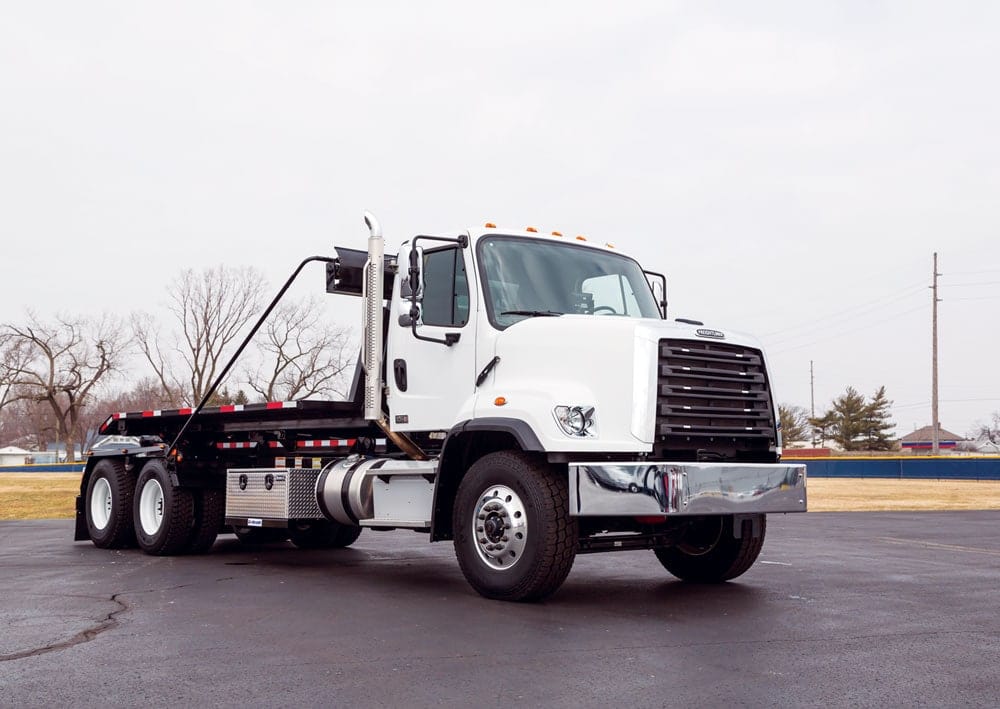When choosing a roll-off truck, decide what features you need and then work closely with your dealer to determine the right roll-off spec’ing needs for your application.
J.P. Davis
Roll-off trucks, also known as dumpster trucks, are very popular, using wheels to literally roll the dumpsters on and off. Rented by their volume (in cubic yards), weight is also extremely important as many locations have a weight limit. Therefore, the type of waste being hauled must be considered as its density is going to impact this. If it weighs more, a smaller container may be necessary, since going over the weight limit will lead to unnecessary overage charges.
Are You Ready?
The benefits of using a roll-off vs. a fixed body truck is flexibility to pick up whatever you can get a set of rails under. It can be a dump truck (with extendable tail), flatbed, tank truck, container carrier, etc. In some instances, a roll-off truck may also replace vehicles already in use and condense your fleet. Some questions to ask yourself if you think you are ready for a roll-off truck:
- Am I paying someone else to haul things that I can do?
- Are my crews constantly waiting for pickup or delivery?
- What else can I do with it?
- Dump body
- Dumpsters
- Just about anything that you can put on rails
Getting Started
The first thing to consider is that it is important to know what you are hauling, whether it is general refuse, heavy refuse or construction, scrap, compactors, recycling, etc. All of these applications can have different truck and hoist specs. For example, when spec’ing for scrap hauling, things to consider include:
- A shifting load
- Short, heavy containers
- Overall high-density weight
- High-cycle count (i.e., running a hoist all day)
On the chassis side, a roll-off is only as good as the truck it is mounted on, and a truck is only as good as its engine. Look for engines with a 425 hp and above for roll-off applications. An under-cab battery was recently developed specifically for severe duty applications and is an excellent choice for roll-off trucks. This type of engine, they can be spec’d with include:
- Double frame or single 7/16″ (11.1mm) inch frame
- 46k lbs. rear axle rating or better
- 18k or 20k lbs. front axle rating (note: if additional axles are needed for bridge laws, spec a 54-inch spread)
- Clear frame packaging
Additional considerations include spec’ing a 186 CT (cab to trunnion) for a 22-foot container, and a 204-inch CT for a 24-foot container as well as heavy-duty hoist considerations. A 75k hoist is best for severe-duty applications, even on tandem axle trucks. Also, consider systems with fast cycle times or systems with single-stage cylinders that are not prone to cylinder cavitation with a shifting load.
Additional Recommendations
Invest in high quality hoses and cables. The devil is in the details! Cheaper hoists may cost you more in the long run. It is also imperative to check your state laws on GVWR before purchasing a truck. For example: You need five total axles in a certain state to get to 80,000 GVWR, but not in another.
When it comes to maintenance, make sure you:
- Grease. Grease everything.
- Make sure drivers are trained on usage.
- Fix all strange noises/leaks
When choosing a roll-off truck, there are several items to take into consideration, including features needed, the application for which you will be needing it and your ROI when making the investment. Work closely with your dealer to determine the right roll-off needs for your company.
J.P. Davis is the Marketing Segment Manager – Vocational for Freightliner Trucks. He can be reached at [email protected].



